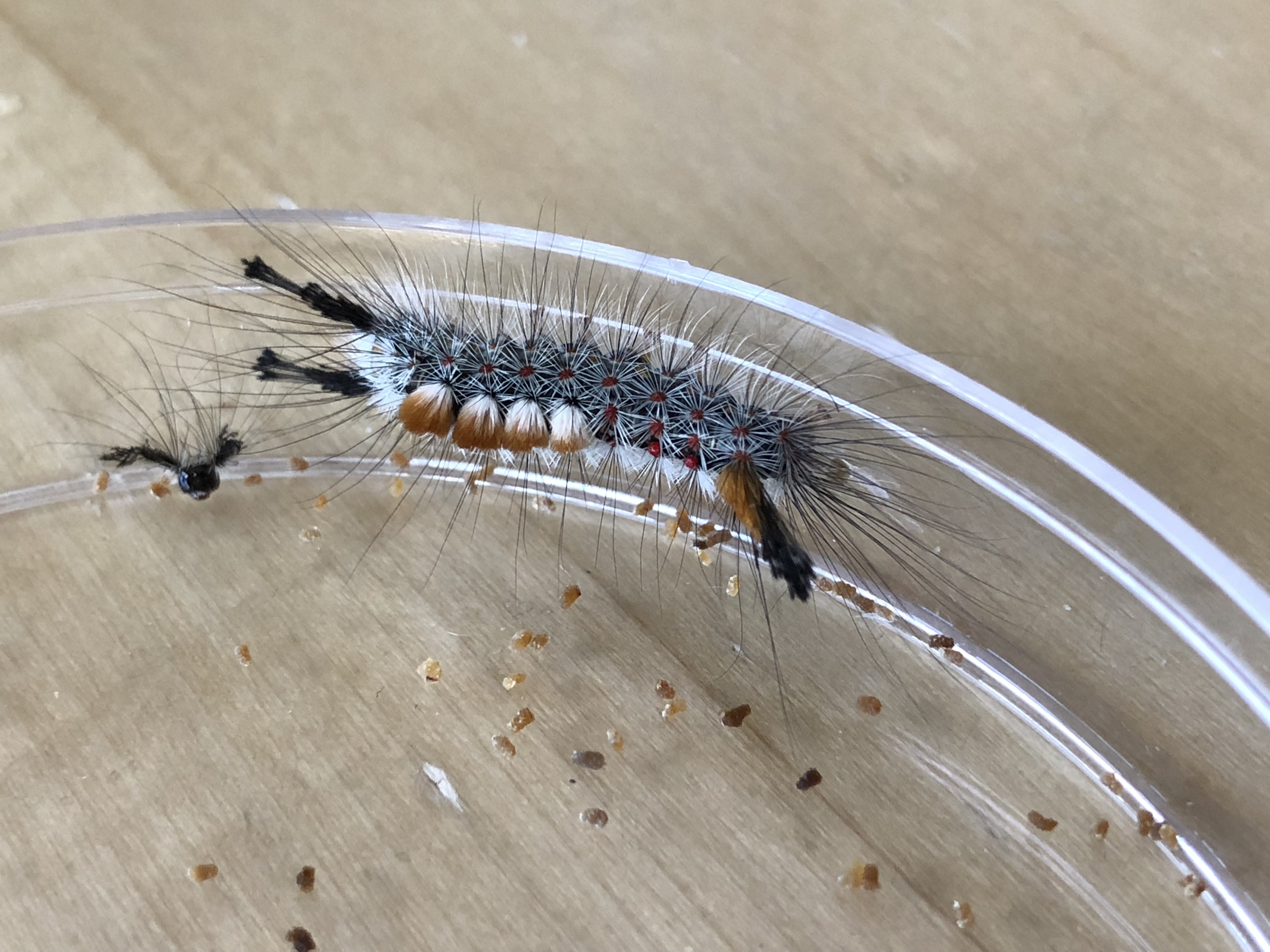Douglas fir tussock moth (Orgyia pseudotsugata) populations have severe outbreaks that are usually terminated by a species-specific virus (OpNPV). OpNPV has two morphotypes, the single-capsid (SNPV) and multi-capsid nucleopolyhedrovirus (MNPV), which are characterized by the way their genetic material is bundled within a protective protein coating (occlusion body). The two morphotypes are phenotypically and genetically different. In classic disease theory, one morphotype will outcompete the other. However, in some populations, the two pathogens coexist at small spatial scales, while in in others you find only one or the other.
My PhD thesis focuses on the mechanisms for virus competition and coexistence in the tussock moth-baculovirus system, which include spatial variability, tradeoffs in fitness parameters, and evolution of host resistance. Across the Douglas fir tussock moth range, which is from the south western united states up to british columbia, the caterpillars experience varying host tree species and climates. I use transmission experiments done in the field to capture the realism of nature in combination with mathematical models to answer these questions.
Model parameterized with experimental data reproduces four key features of field observations. First, host and pathogen cycles with long period and large amplitude. Pathogen coexistence is found under broad range of conditions. Douglas fir forests are more likely to lead to dominance of MNPV morphotype. Finally, mixed forests are more likely than Douglas fir forests to allow for coexistence of MNPV and SNPV morphotypes.

